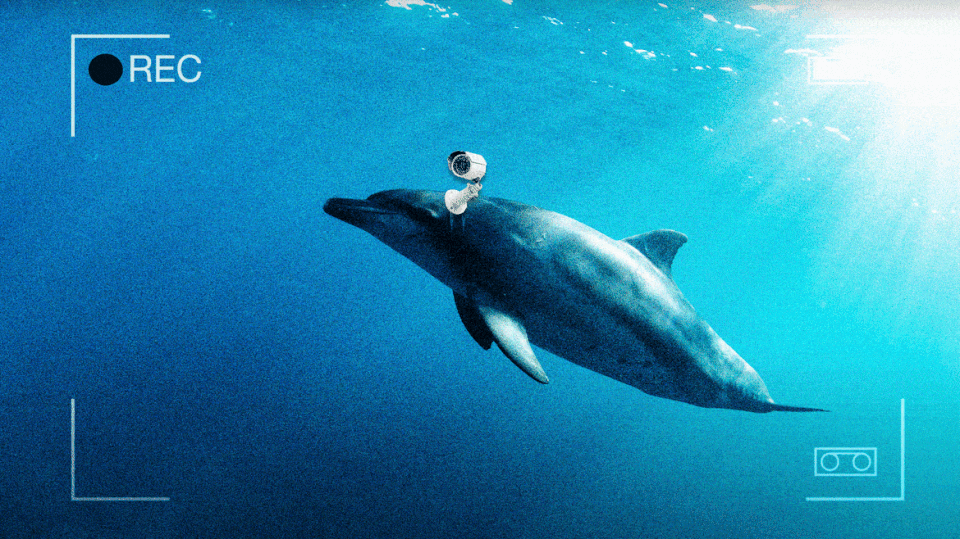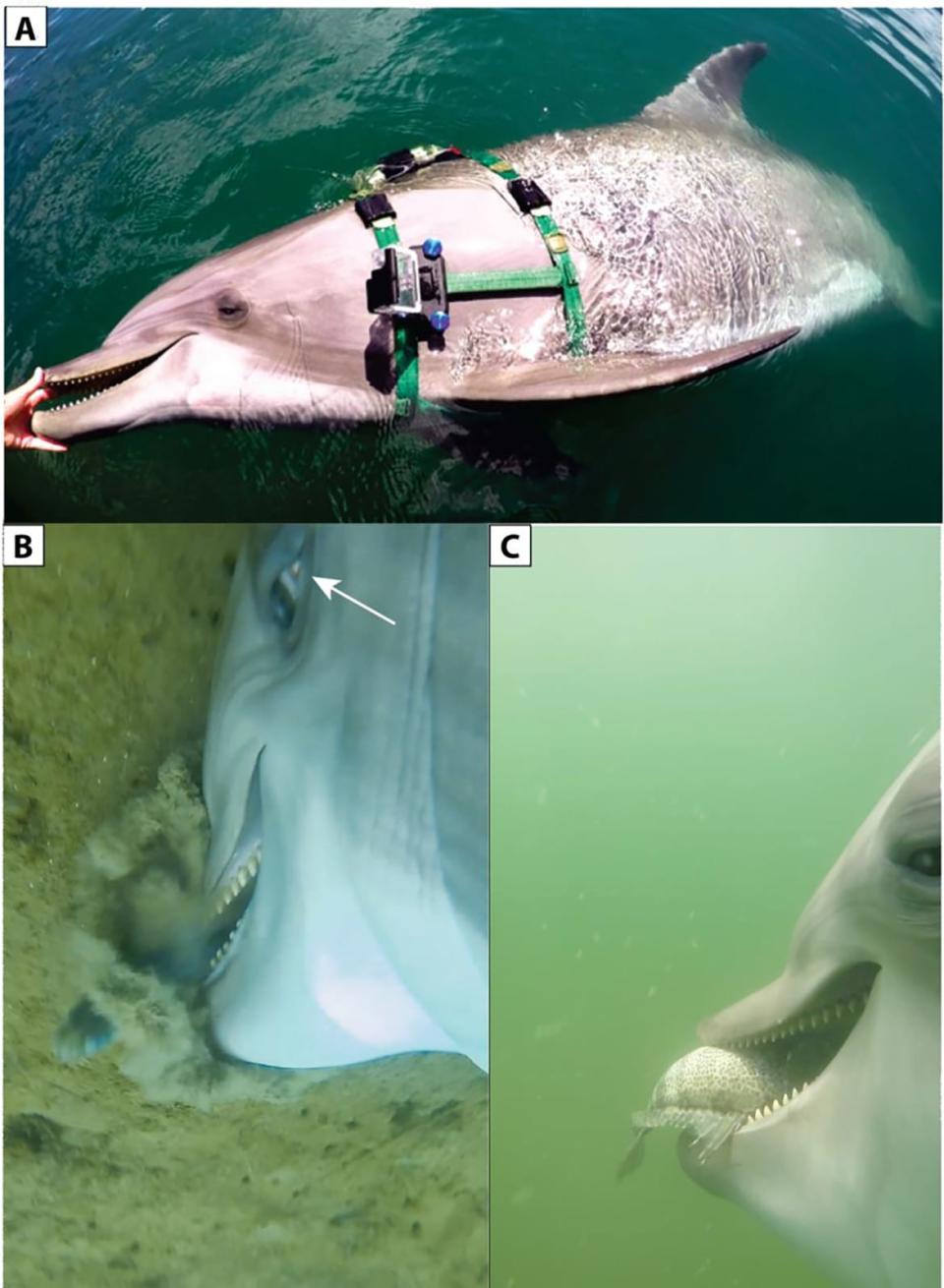Scientists Strapped Cameras to Navy Dolphins and Captured Something Terrifying
At the risk of awarding the title prematurely, we think we’ve found the weirdest study published in 2022. Scientists strapped GoPro cameras to the bodies of six dolphins trained by the U.S. Navy, and recorded them hunting for food and consuming their prey in grisly detail. According to the study, there was a purpose behind this potential invasion of dolphin privacy; namely, to learn more about how the mammals hunted and ate.
Scientists have previously made two competing assumptions about how dolphins ate. They engaged in either ram feeding, in which the predators swim faster than their prey and clasp the fish in their jaws as they overtake them; or suction feeding, in which predators move their tongues and expand their throats to create negative pressure and slurp up prey. The authors of the study, which was published on Wednesday in the journal PLoS ONE, set out to determine which method dolphins actually used.
“[S]ound and video together have never been used before to observe the behavior of dolphins and of the live fish they capture and consume,” they wrote in the study.

And, of course, there’s the fact that these dolphins were trained by the U.S. Navy. The Marine Mammal Program as it’s called today has existed in some form since before 1960, when Navy researchers attempted to improve torpedo design by studying dolphins. Since then, they have spent millions of dollars annually to foster and train bottlenose dolphins and California sea lions. According to the program’s website, these animals “have excellent low light vision and underwater directional hearing that allow them to detect and track undersea targets, even in dark or murky waters”—and unlike human divers, they don’t suffer from the bends.

Still, the existence of a Navy program to train dolphins to identify targets like deep-sea mines does not explain why this study was conducted. And because Sam Ridgway, the lead author of the research and a founder of the Marine Mammal Program, passed away earlier this year, it does not seem like we will ever know the answer to this pressing question. We must instead hew to the text of the study itself, which is helpfully written like dolphin fan fiction. Here is a passage explaining what the GoPro footage of the three dolphins hunting looked and sounded like:
“Squeals continued as the dolphin seized, manipulated and swallowed the prey. If fish escaped, the dolphin continued the chase and sonar clicks were heard less often than the continuous terminal buzz and squeal. During captures, the dolphins’ lips flared to reveal nearly all of the teeth. The throat expanded outward. Fish continued escape swimming even as they entered the dolphins’ mouth, yet the dolphin appeared to suck the fish right down.”— Ridgway et al.
The angle of the cameras’ present a view of dolphin side eye that we have never before seen, nor care to see again. Up close, it is clear that these are not idyllic Lisa Frank dolphins; these are terrifying, nightmare-inducing Roman dolphins that seem to crave the thrill of the chase. The study, which is the Marine Mammal Program’s 330th peer-reviewed article, details how “it became apparent” when the dolphins had identified their next target: The animals picked up speed, as observed by an increase in the sound of the water as they whooshed through, and their heartbeats became audible in the recordings.
It is important to remember that there was a scientific purpose to this pseudo-horror movie footage. The researchers found that for the most part, the dolphins engaged in suction feeding, not ram feeding. “We were surprised by the ability of all of our dolphins to open their upper and lower lips” to suck in food, they wrote.

But wait! The GoPros also captured a dolphin eating sea snakes, which has never before been observed: “It is notable that on one day, dolphin Z preyed on 8 yellow bellied sea snakes. The dolphin clicked as it approached the snake and then sucked it in with a bit more head jerking as the flopping snake tail disappeared and the dolphin made a long squeal.”
You’re welcome.
Got a tip? Send it to The Daily Beast here
Get the Daily Beast's biggest scoops and scandals delivered right to your inbox. Sign up now.
Stay informed and gain unlimited access to the Daily Beast's unmatched reporting. Subscribe now.

